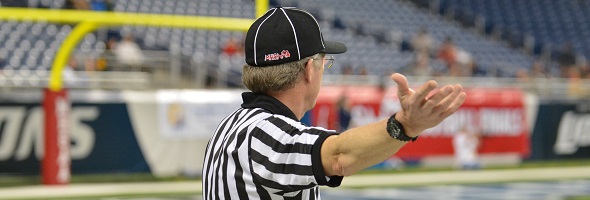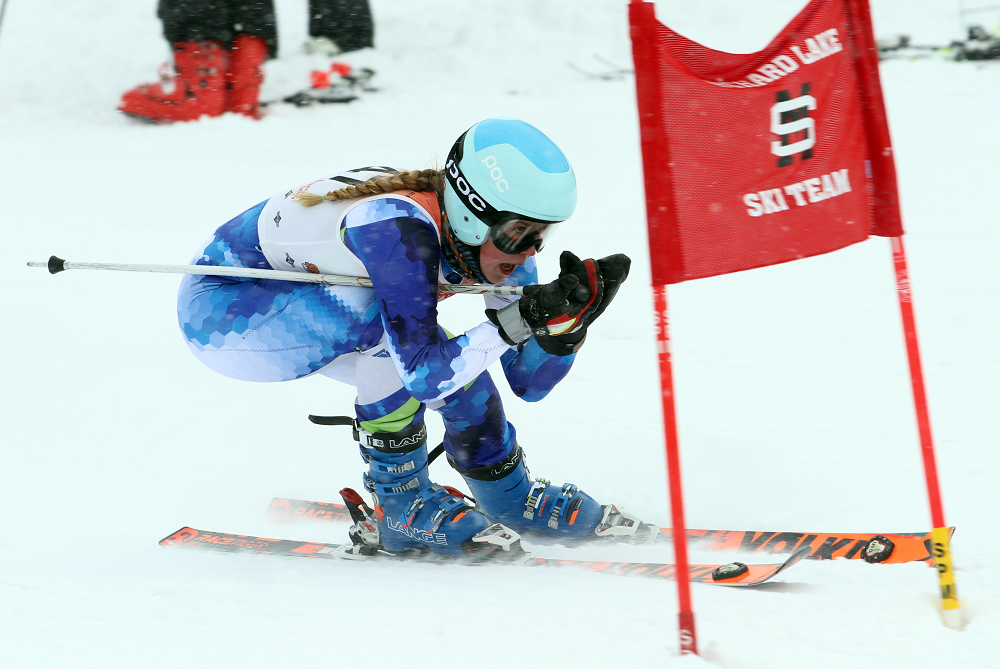
Be the Referee: Blocking Below the Waist
November 13, 2014
This week, MHSAA assistant director Mark Uyl explains the differences between high school and the college and professional games when it comes to blocking below the waist.
"Be the Referee" is designed to help educate people on the rules of different sports, to help them better understand the art of officiating and to recruit officials. The segment can be heard on Mondays, Wednesdays and Fridays during the school year on The Drive With Jack Ebling on WVFN-AM, East Lansing.
Below is this week's segment - Blocking Below the Waist - Listen
Many times the key rules differences between high school football and those rules used at the college and profession levels deal with player safety. One of the best examples of this deals with the rules that cover blocking below the waist.
All of us have watched that game played on Saturday or Sunday; we’ve seen that wide out or the wide receiver blocking downfield, and they block the defender below the waist in springing that runner for a big gain.
At the high school level, the only offensive players that can block below the waist are those on the offensive line, generally positioned from tackle to tackle, and those blocks below the waist must be immediate – at the snap – and within that free blocking zone at the line of scrimmage.
Past editions
Nov. 5 - Tournament Selection - Listen
Oct. 29 - Uncatchable Pass - Listen
Oct. 22 - Preparation for Officials - Listen
Oct. 15 - Automatic First Downs - Listen
Oct. 8 - Officials & Injuries - Listen
Oct. 1 - Overtime - Listen
Sept. 25 - Field Goals - Listen
Sept. 18 - Tackle Box - Listen
Sept. 11 - Pass Interference - Listen
Aug. 25 - Targeting - Listen

Be the Referee: Ski Finish
By
Sam Davis
MHSAA Director of Officials
February 21, 2023
Be The Referee is a series of short messages designed to help educate people on the rules of different sports, to help them better understand the art of officiating, and to recruit officials.
Below is this week's segment – Ski Finish - Listen
The sun is out, the snow is in great condition, I’m zooming down the hill … making all my gates … I’m having a great run at the Ski Finals. But as I near the finish line, I lose a ski. Maybe I lose both skis. But my momentum is enough, or I’m good enough on one ski to cross the finish line. Is that a legal finish?
Ski rules state that the athlete’s feet must cross the finish line. That can be done on both skis, one ski – or no skis.
With electronic timing, the clock stops when any part of the skier crosses the line. With hand timing, the clock should be stopped when the skiers feet cross the line.
If there is a question, the referee and timekeeper are responsible for determining a legal finish.
Previous Editions:
Feb. 14: Swimming Touchpads - Listen
Feb. 7: In or Out-of-Bounds in Wrestling - Listen
Jan. 31: Over the Back - Listen
Jan. 24: Competitive Cheer Judges - Listen
Jan. 17: More Lines - Listen
Jan. 10: On the Line - Listen
Jan. 3: Basketball Measurements - Listen
Dec. 13: Pregame Dunks - Listen
Dec. 6: Gymnastics Judges - Listen
Nov. 22: Football Finals Replay - Listen
Nov. 15: Back Row Illegal Blocker - Listen
Nov. 8: Swim Turn Judges - Listen
Nov. 1: Soccer Referee Jersey Colors - Listen
Oct. 25: Cross Country Tie-Breaker - Listen
Oct. 18: Soccer Shootouts - Listen
Oct. 11: Safety in End Zone - Listen
Oct. 4: Football Overtime Penalty - Listen
Sept. 27: Kickoff Goal - Listen
Sept. 20: Soccer Timing - Listen
Sept. 13: Volleyball Replays - Listen
Sept. 6: Switching Sides - Listen
Aug. 30: Play Clock - Listen
Aug. 23: Intentional Grounding Change - Listen

